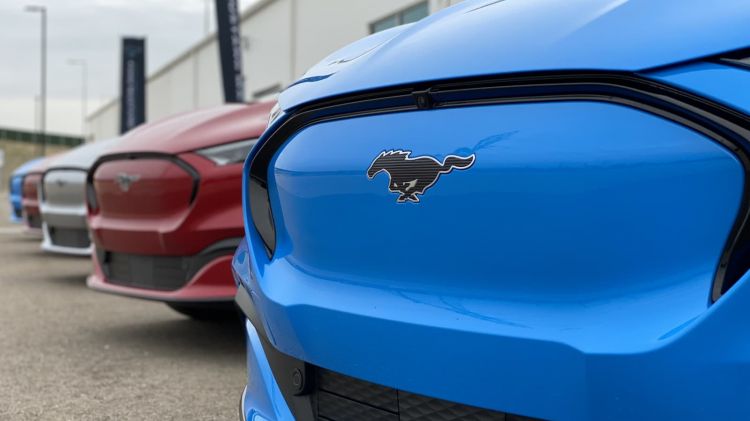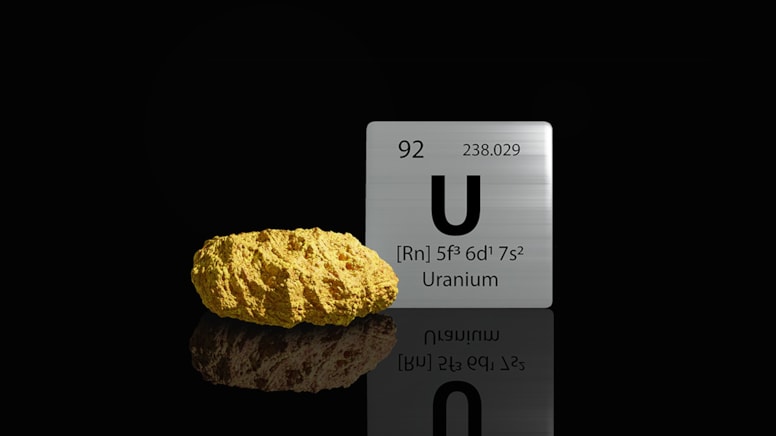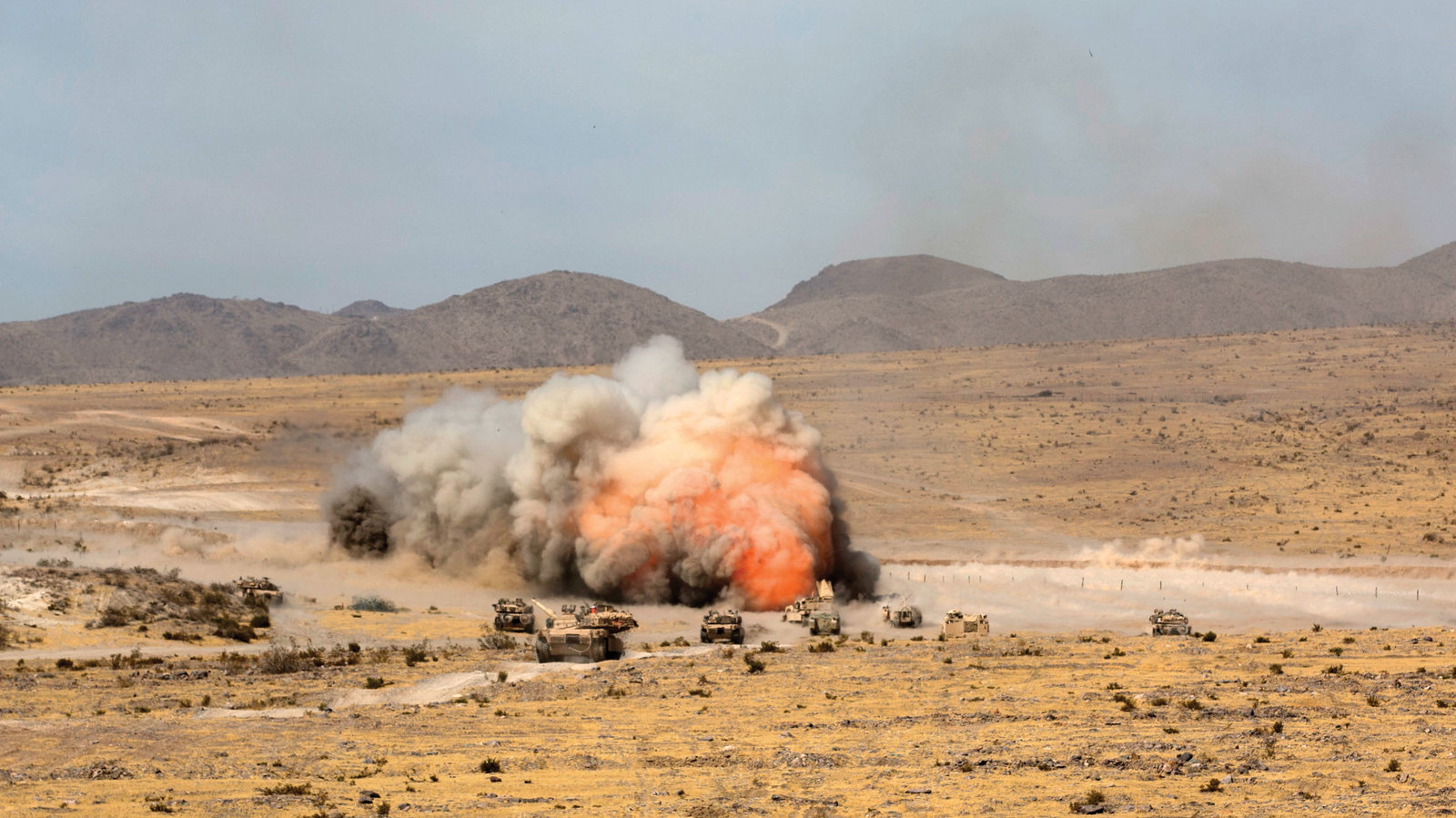Following is a transcript of the video.
Aj Caldwell: This here is Ford's latest Shelby Mustang. At 760 horsepower, it's the fastest, most powerful Mustang the company has ever produced. However, that monster of a machine evolved from a sports car that took 17 seconds to go 60 miles an hour. So, how did the first Mustang go from this to that?
To understand that evolution, we have to go back to the beginning. In the '60s, Ford was looking to create a car for baby boomers that was different from the large sedans and family cars their parents were driving.
Commercial: The Mustang's combination of hot styling, hot performance, and cool price will make it a big thing with the youth market.
Aj: So, in 1964, the company released its first Mustang. It was small but sleek and stylish. And although it wasn't the most powerful car on the market, it had a lot of power for its size. Just how much muscle are we talking? Well, Ford's top-of-the-line model packed a 4.7 V-8 capable of 271 horsepower. It went from 0 to 60 in 7 1/2 seconds. And while it wasn't the fastest car on the market, Ford quickly discovered that those weren't its limits.
Ford immediately saw the Mustang's potential as a bona fide race car. So they brought in racing engineer Carroll Shelby. Carroll Shelby: Only Mustang makes it happen. These aren't just words. It's a fact. Aj: Shelby gave them not one, but two street-legal race cars with the GT350 and the GT500. The GT500 was given the same high-powered V-8 engine found in the Le Mans-winning GT40. This Mustang on steroids got adjustable shocks, upgraded wheels, a larger anti-roll bar, and, best of all, a starring role next to Nicolas Cage in "Gone in 60 Seconds."
By the end of the 1960s, the Shelby Mustang, now being built in Ford's factory, was given the company's famous Cobra Jet engine. The Cobra Jet was based on the GT500's previous engine, but upgraded with enormous valve heads, a bigger carburetor, and a special performance air cleaner. Allegedly, the Cobra Jet could produce over 400 horsepower, but Ford reported it at 335 so it could qualify for easier-to-win classes at drag races.
Ford's Mustang was a colossal hit. They sold 22,000 cars on the first day and a million cars in two years. But its success sparked competition from Chevy with its Camaro and Pontiac with the Firebird. Ford needed bigger and bigger engines to compete. So the Mustang itself grew. But when tougher fuel-emission laws forced automakers to make lower power output, the company was left with a Mustang that was now bloated and boring. Sales tanked, and Ford had to rethink their prized pony car.
By the 1970s, big cars were out. Americans fell in love with European sports cars and Japanese compacts. Ford realized the problem and responded with the Mustang II. It was 500 pounds lighter and 20 inches shorter, but it also tossed that reputation for speed right out the window. Its tiny standard engine offered as little as 88 horsepower, and its one optional engine was a V-6 that barely made 100! The top-level Mustang took 12 seconds to hit 60 mph.
But Americans weren't looking for horsepower, and oil prices had hit in '73, and gas prices skyrocketed. The economy was tanking, and consumers needed to save money. Coincidentally, the new Mustang showed up just in time. It was the perfect solution because it was affordable and fuel efficient. Ford sold almost 400,000 units in just the first year.
But as the gas crisis ended, Americans were back to wanting big, fast cars. Ford answered with a 5-liter V-8 for the Mustang, but it was a far cry from the performance Mustangs were producing a few years earlier. At 134 horses, it barely got a top speed of 100 mph. It was time for the Mustang to go back to its roots.
Ford answered it up with one of its most iconic cars to date: the Fox Body Mustang. Ford had been using the Fox platform for everything from compact cars to station wagons. It had a unibody structure, flexible chassis, and wide engine bay. When they added the Mustang to that list of vehicles, it was an instant hit. Even today, its versatility has made the Fox Body Mustang extremely popular with car tuners.
Ford's new pony car was both longer and wider, but it cut weight in its suspension. It weighed 200 pounds less than the Mustang II, improving gas mileage and reducing drag. But the muscle-car era had ended. The country was in an economic depression, and heavy fuel-emission laws were in place. Another oil crisis in '79 forced Ford to shrink its top-level V-8 engine to a smaller one that powered the Mustang 0 to 60 in a less-than-exciting 10.8 seconds.
Ford tried to keep speed junkies and the EPA happy by introducing the Mustang's first-ever turbocharged engine. It was a tiny little four-cylinder engine that Ford called the Lima and hoped could be a performance-level engine, but it constantly overheated, and Ford engineers just couldn't figure out the kinks with turbocharging.
But Ford's introduction of fuel injection changed everything. Up until then, engines relied on carburetors to mix fuel and air for combustion. But on a four-cylinder engine, some of the cylinders were further away than others, and you couldn't guarantee the proper fuel-to-air mixture. With fuel injection, heavy air pressure is used to deliver fuel from the gas tank directly into the engine cylinders at precise bursts. There's no longer a need for a carburetor. With the mix happening right inside the engine's cylinders, the engine becomes more reliable, powerful, fuel efficient, and even has less poisonous emissions. This breakthrough allowed Ford to bring back the Lima, now even more powerful. The full-size V-8 was back too, and it was the Fox Body's most sought-after engine.
Ford added a more aerodynamic design in '87, and the Mustang's popularity exploded again. The Ford Mustang's base price cracked $10,000 for the first time in history. Sales plummeted, and people were over the Fox Body design. Surveys showed that consumers wanted something more reminiscent of the original Mustang.
For the Mustang's 30th anniversary, Ford introduced the fourth generation. It had a new jelly-bean-type shape but featured nods to the original Mustang, especially in the cabin. In '93, Ford assembled some of its best engineers and gave them one mission: Win over the world's biggest speed freaks. They were called the special vehicle team, and they blessed the world with the Cobra SVT. With the Cobra model, we get the Mustang's first-ever independent rear suspension. This means each wheel on the rear axle was able to move independent of one another, allowing them to stay planted even in the tightest turns. While the Fox Body still had the advantage in a drag race, the new Mustang was much better on the track.
For 2003, Ford added to the Cobra SVT's upgraded engine the same supercharger found on the Ford F-150 Lightning pickup truck. It went from 0 to 60 in 4.5 seconds. Ford's precious pony car was once again a street-legal race car. The Mustang's No. 1 rival, the Chevy Camaro, couldn't keep up. Sales plummeted, and Chevy axed the sports car. Mustang was now in a class all its own.
The fifth generation finally saw the Mustang get a platform of its own. For the first time in 30 years, the Mustang finally resembled the iconic design of its original. By 2011, Ford would add to it a brand-new V-8 known as the Coyote. This engine was rated at around 412 horsepower and priced at $30,000. With the Coyote under the hood, the Mustang had a faster Nürburgring time than BMW's $60,000 M3. In 2007, Ford and Carroll Shelby would revive their partnership and produce the first GT500 in almost 40 years. By 2013, they were cranking out the most powerful American V-8 you can find on the road.
But that independent rear axle that was so well received was ditched to cut costs. But consumers didn't care; sales skyrocketed. But two things were coming that were gonna ruin the party. The 2008
recession
and the return of the Camaro. Chevy took note of the public's reaction to the new Mustang, and it decided to revive its pony car. With one two-hour-and-23-minute commercial called "Transformers," Chevy took back the market. The last five years of the fifth-generation Mustang were the worst five years of the Mustang's sale history. The Camaro was America's favorite pony car.
So, in 2015, Ford gave us what we know as the present-day Mustang. It's an accumulation of all of the Mustang's successes in the past. It has that beloved squared-off design from its very first model, and it finally balances fuel efficiency with performance. The short-lived, but popular independent rear suspension has finally made its way to standard equipment. Combined with the wider body for a low center of gravity, it makes for the best-handling Mustang in years. And an even faster version of the Coyote V-8, dubbed the Predator, has been put in the GT500, making 760 horsepower with a 0 to 60 of 3.5 seconds, making it the fastest street-legal car Ford has ever made.
Ford's next Mustang isn't quite the car you'd expect. The Mustang Mach-E is an electric crossover, but it is a return to Mustang's original ethos. In a world where young people are more environmentally conscious, the Mach-E could be the company's latest attempt at capturing the next generation of drivers.
NOTE: This video was originally published in October 2020.




















